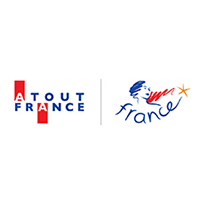Thailand
A rhythmic dance accompanied by improvised chants, the Nora Dance is an intangible cultural heritage of southern Thailand. Fully discover it on your next journey to the Land of Smiles.
The Nora dance: a form of traditional dance in Thailand
Thailand is not just about its impressive temples, floating markets, or endless mountainous rice fields. During your stay, you can watch a dramatic traditional dance performance by local artists, the Nora dance. Originating in the Southern Islands, this dance form was initially reserved for significant solemn occasions. However, with young dance troupes breaking free from academic constraints, Nora spread across the country. Adorned in brightly colored attire, the performers enact a theatrical piece and execute carefully studied dance moves accompanied by drums and cymbals. Culture and folklore enthusiasts seeking to explore another aspect of Thailand are in for a treat!
The origins of Nora dance
Nora is to Thais what classical ballet is to the French or flamenco to the Andalusians. Initially, it was strictly codified as a ceremonial dance. Artists were required to graduate from a Nora dance school. The choreographic performance occurs only once a year, sometimes every three or five years. It begins with an invocation of deities and ancient Nora masters to join the ritual ceremony and accept the humble offerings of the dancers. This is the "Nora Rong Khru," the original form of Nora as invented by the island peoples of the Gulf of Thailand. Three days and three nights were spent dancing continuously, with the opening date set by school leaders.
Today: a full-fledged tourist attraction
Over the past two decades, Nora has modernized by gradually breaking free from academic rules. While the invocatory prelude remains obligatory, along with the interpretation of a drama or lyrical comedy, actors can now indulge in improvised rhythmic movements. Today, Nora—sometimes transcribed as "menora" or "manora"—is a cherished entertainment dance among southerners. It thrives mainly in the rural communities of Trang, Songkhla, and Phattalung.
However, Nora has spread to the central and northern regions of the country. This means that no matter the chosen destination, tourists will have the opportunity to witness this dance spectacle by booking a cultural tour in Thailand.
The artistic conventions of Nora dance
The Nora Dance is a complete stage performance. It is a dance inspired by a famous play where melody merges with choreography. Typically, the dramatic piece illustrates episodes from the life of Jataka. It is performed by a minimum of two dancers and a maximum of five dancers.
The Nora performance can be divided into 8 stages:
Stage 1: An opening song (Tang Khrueang) is played as a prelude; it invites gods and ancestors' spirits to join the show and implores their approval to perform Nora in the square.
Stage 2: After this invocation, the curtain opens (Hom Rong).
Stage 3: The orchestra plays Coen Khru. This tune deals with the birth and chronological evolution of Nora, praising good men and dance masters.
Stage 4: The actual dance begins. After singing verse passages behind the curtain, the dancers appear on stage in this order:
- Nang Phanak: a performer sitting aside on a bench;
- Wa Bot Rai Tree: another performer;
- Tham Bot: he reprises excerpts from a lyrical work in a contorted movement, where arms and legs move in harmony;
- Wa Klon: he sings verses to demonstrate his oratorical skills, either by repeating a known poem or inventing one on the spot;
- Ram Uat Mue: unlike Wa Klon, he merely dances.
Stage 5 (Ok Phran): The jester enters next. His role is to amuse the audience with humor and comedic performances.
Stage 6 (Ok Tua Nai Rong): This is the stage where the lead dancer, playing the main role, appears on stage. She is called Nora Yai. The role is held by a professional artist who usually leads the troupe.
Stage 7 (Ok Phran): The jester announces the title of the play to be performed.
Stage 8: Performance of the dramatic piece.
Costumes and musical accompaniment
To leave a lasting impression, Nora is performed with vibrant costumes and meticulous musical arrangements.
The main character, who is always female, wears a colorful shirt adorned with various patterns and calf-length pants. Accessories for the attire include:
- Kamlai plai khaen: bracelets worn on the wrist;
- Kamlai ton khaen: ribbons worn on the arms;
- Pik nok aen: two wings attached to the back of the attire;
- A necklace around the neck embellished with pendants;
- Lep: nail extensions;
- And pha hoi: pieces of fabric detached at the front and on both edges of the shirt.
Secondary characters and extras wear the same attire as the main character, except for the absence of wings, trims, and pendants.
Nora is characterized by a musical accompaniment. Percussion instruments are used: thap nora is the centerpiece of the orchestra. It consists of a pair of drums with two distinct sounds. A third drum, cymbals, small gongs, traditional oboes, and wooden sticks complete the ensemble.

